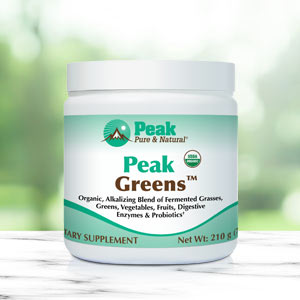Get Easy Health Digest™ in your inbox and don’t miss a thing when you subscribe today. Plus, get the free bonus report, Mother Nature’s Tips, Tricks and Remedies for Cholesterol, Blood Pressure & Blood Sugar as my way of saying welcome to the community!
The nutrient with huge disease prevention potential we don’t get enough of

We’ve been singing the praises of dietary fiber for quite a while now…
Getting enough fiber is key to maintaining good bowel health and keeping your blood pressure and cholesterol low, as well as reducing inflammation, improving blood sugar levels and preventing diabetes.
And those are only a few of fiber’s health benefits. Consuming plenty of fiber can help fight brain inflammation and the memory loss that often accompanies it. It helps balance the helpful bacteria in your gut, which can strengthen your resistance to harmful bugs that can cause infection and disease. Fiber can help prevent weight gain and boost your mood. And some studies have even shown that eating fiber can help you live a longer, healthier life.
Unfortunately, all those benefits haven’t been enough to spur people to add more fiber to their diet. Between the glut of highly processed low-fiber foods in the average Western diet and the popularity of meat-heavy diets like keto and carnivore, which tend to be lacking in fiber, the vast majority are simply not getting enough of this health-boosting nutrient.
And that’s a problem considering fiber’s potential for chronic disease prevention…
More evidence our diets are woefully short of fiber
According to a study recently presented at Nutrition 2021 Live Online, only 5 percent of men and 9 percent of women are consuming the recommended daily amount of dietary fiber.
This is bad news, since insufficient fiber intake can lead to a higher risk of two of the most common diseases in the United States: heart disease and diabetes. It’s especially important for people with diabetes to eat enough fiber since they’re at greater risk of developing heart disease.
For the study, researchers analyzed data from more than 14,600 U.S. adults participating in the National Health and Nutrition Examination Survey (NHANES) between 2013 and 2018.
“Unlike other similar studies, our analysis estimated Americans’ usual fiber intake using advanced statistical methods instead of calculating a simple average,” says Dr. Derek Miketinas, an assistant professor at Texas Women’s University and the study’s lead author. “This approach is a better indicator of what a person typically eats because it can account for other factors that may influence fiber intake.”
Current health guidelines advise eating 14 grams of fiber for every 1,000 calories consumed. According to study, women on average consumed 9.9 grams of fiber for every 1,000 calories, and men on average consumed 8.7 grams per 1,000 calories. The averages were slightly higher among those with diabetes but still, the numbers fell way short of the daily recommendations for fiber intake.
“The results of this study can be used to identify relationships between dietary fiber intake and outcomes of interest like risk factors for heart disease,” Miketinas says. “In fact, our preliminary analysis suggests that higher dietary fiber intake in adults with diabetes is strongly associated with reductions in markers for heart and kidney disease.”
How much fiber is enough for disease prevention potential?
Miketinas says the study findings are a good reminder for people to choose fiber-rich foods like whole grains, fruits and vegetables to lower their risk for heart disease and diabetes.
To ensure you’re getting enough fiber, it’s recommended that women set a goal of getting 25 grams of fiber every day, based on a 2,000-calorie diet, while men should aim for 38 grams based on a 2,500-calorie diet. The fiber targets can be lower for those over age 50, but they shouldn’t drop below 21 grams per day for women and 30 grams per day for men.
The best way to add fiber to your diet is to eat two cups of fruit and two and a half cups of vegetables every day. Most fruits and vegetables contain a good amount of fiber, but if you want to get more bang for your buck, try adding fiber-rich fruits and vegetables like raspberries, guava, avocados, artichokes, dark leafy greens, beans, lentils and chickpeas.
Another good fiber source is whole grains, which you can substitute for processed grains that are low in fiber. For instance, a whole grain like pearled barley has six grams of fiber per cup, while the same amount of white rice contains less than two grams of fiber. You can also switch to brown rice — while not as fiber-rich as barley, it has three and a half grams of fiber per cup.
And you can get fiber from whole nuts as well. Almonds are particularly high in fiber, with 3.5 grams per one-ounce serving.
Editor’s note: Are you feeling unusually tired? You may think this is normal aging, but the problem could be your master hormone. When it’s not working, your risk of age-related diseases skyrockets. To reset what many call “the trigger for all disease” and live better, longer, click here to discover The Insulin Factor: How to Repair Your Body’s Master Controller and Conquer Chronic Disease!
Sources:
Most Americans are not getting enough fiber in our diets — American Society for Nutrition
Chart of high-fiber foods — Mayo Clinic
Your Ultimate High-Fiber Grocery List — WebMD
Fiber: How to Increase the Amount in Your Diet — American Academy of Family Physicians














